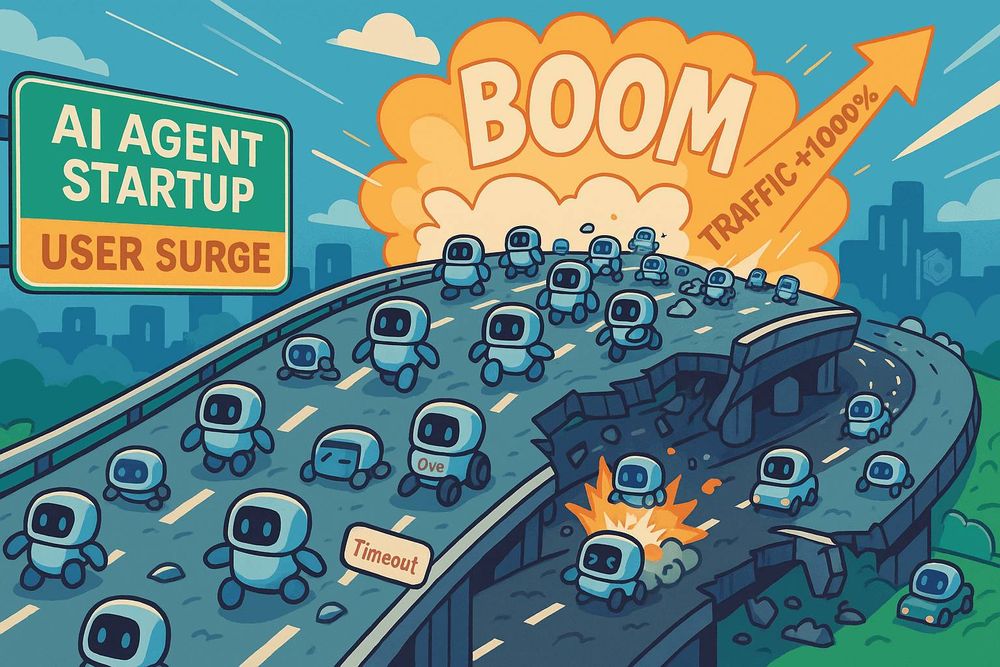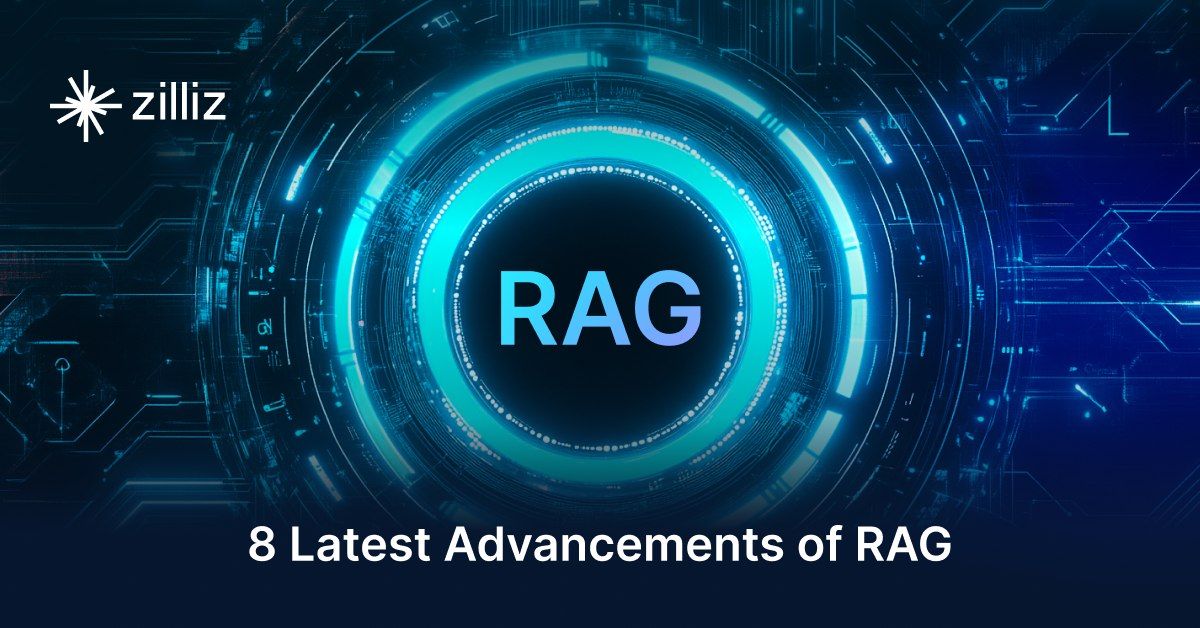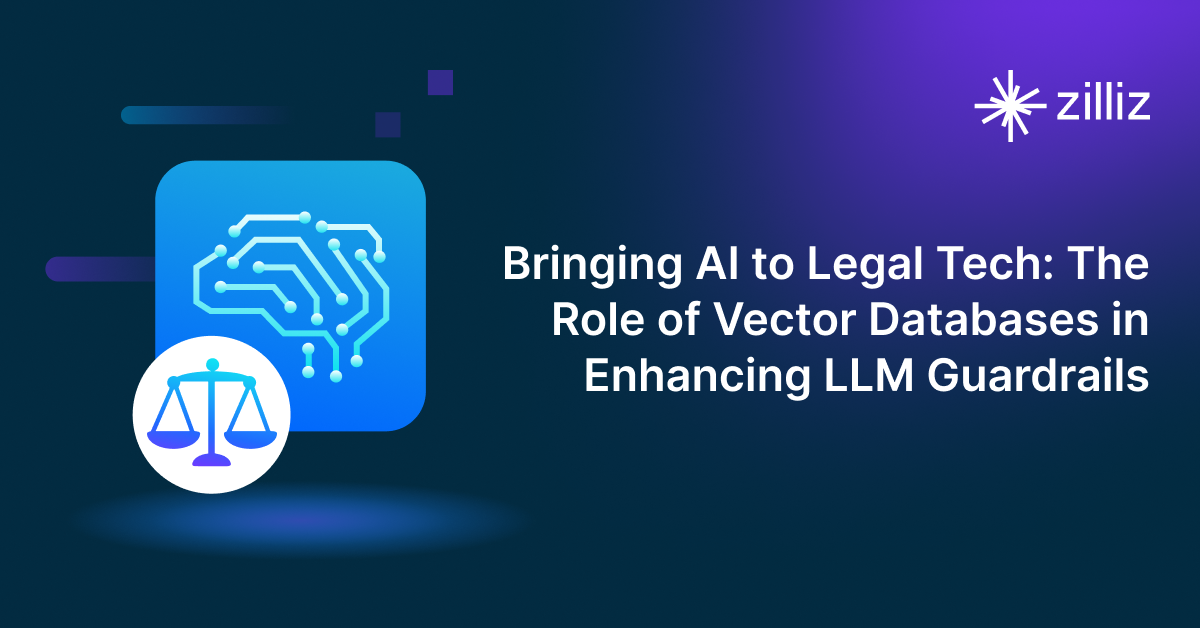Why Not All VectorDBs Are Agent-Ready

Your AI agent just crushed another demo. Investors are impressed, users love the experience, and your team is riding high. But lurking beneath that success is a ticking time bomb: the infrastructure choice you made three months ago when you just needed something that worked.
Sound familiar? We've seen this story dozens of times—brilliant agents built on infrastructure that crumbles under success. The root cause is almost always the same: vector database choice. As the backbone of AI agent memory, it's where most teams unknowingly sabotage their own scaling potential.
And choosing the right one just got a lot harder. Since AI exploded, every database vendor suddenly decided they're a "vector database." It's like watching pizza shops declare themselves five-star restaurants because they added truffle oil to the menu.
Sure, these solutions work great for your 10,000-vector prototype. But when you hit 100 million vectors with thousands of concurrent users in production? That's when reality hits hard.
Four Types of “VectorDBs”: Only One Works for Production AI Agents
The landscape can be broken down into four approaches. Three will have you rebuilding everything when success arrives. One is built for the scale you're trying to reach.
Vector Search Libraries: FAISS and HNSWLIB deliver great benchmarks but barely have production features. No persistence means the server restarts and wipes your agent's memory. No concurrency support creates race conditions with multiple users. No real-time updates mean index rebuilds can take hours, freezing your agent's learning. Great for research, terrible for production.
Traditional Databases with Vector Add-ons: PostgreSQL + pgvector seems sensible until you realize you're forcing vector operations through systems designed for completely different workloads. They work fine at 1 million vectors if there are few changes (ie, the index stays the same), but degrade unpredictably in performance when handling more dynamic workloads or with concurrent users. Elasticsearch has similar issues—vector operations get wrapped in query DSL designed for text search, creating performance overhead that compounds with complex agent queries. These solutions treat vectors as secondary features, not core capabilities.
Lightweight Vector Solutions: Light solutions like Chroma optimize for convenience over scale. Setup takes minutes, and APIs are clean, but they hit scaling walls around hundreds of thousands of vectors. When your agent gains traction, architectural limitations force expensive migrations just when success arrives.
Purpose-Built Vector Databases: Then there are databases like Milvus, designed from the ground up for real-world vector operations at scale. Every component—storage engines, query optimizers, network protocols—is architected specifically for similarity search and production AI agent workloads.
What Production Agents Actually Demand
You might be thinking: "Come on, how bad can it really be? PostgreSQL handles millions of rows just fine, and my prototype works great." I get the skepticism—every database vendor promises their solution scales, and frankly, most work adequately for basic similarity search.
But here's what changes everything: production AI agents don't just do basic similarity search. They need complex operations under real-world constraints that expose the fundamental limitations of retrofitted solutions.
Exponential scaling math: When your ProductHunt feature drives 10x overnight growth, your vector index built for 100,000 embeddings now faces 10 million. Traditional databases like PostgreSQL+pgvector started doing full table scans because their indexing wasn't designed for high-dimensional vector density. Query times jump from 50ms to 5+ seconds as similarity search complexity scales exponentially with both data volume and concurrent access.
The 100ms hybrid search reality: Your customer service agent needs to execute queries like "Find billing discussions for this customer, excluding resolved issues, similar to the current complaint, prioritizing the last 30 days." That's semantic similarity combined with metadata filtering, temporal constraints, and business logic—all in under 100ms, or the conversation feels broken. Most vector databases force you to choose between speed and complexity.
Multi-tenant data isolation: In a multi-tenant situation, Customer A's 10,000 documents and Customer B's 10 million both need consistent sub-second performance with zero data leakage, not just for privacy, but for regulatory compliance. Simple partitioning creates "noisy neighbor" problems where large customers degrade everyone's performance. You need database-level isolation that maintains predictable performance characteristics.
Global compliance without compromise: GDPR requires EU data to stay in European data centers, while Chinese regulations mandate local residency. Yet your agents need unified access to global knowledge bases. Your infrastructure must support federated search across regions while maintaining strict data locality, comprehensive audit trails, and real-time updates—all without performance degradation.
Why Open-Source Milvus Solves What Others Can't
Given these demanding production requirements, let's talk about what actually works. Milvus is an open-source vector database purpose-built from the ground up for scalable vector and AI search workloads. While other approaches struggle with the exponential scaling math, 100ms hybrid search reality, multi-tenant isolation, and global compliance demands we just outlined, Milvus treats these as core design requirements rather than afterthoughts.Here's what Milvus delivers for production agents: * True Horizontal Scaling at billion scale: Add capacity by adding nodes, not rewriting architecture. Proven on billions of vectors with consistent performance.
Native and flexible Multi-Tenancy: database-level, collection-level, and partition-level isolation with predictable performance, eliminating the workarounds that plague other solutions.
Hybrid Search Excellence: Semantic similarity, metadata filtering, and keyword search in unified queries—no separate systems to maintain.
Real-Time Agent memory: Continuous updates without index rebuilding delays or performance dead zones.
Open Source Foundation: Complete transparency, no vendor lock-in, and a community of thousands contributing to your success.
With over 35,000 GitHub stars and adoption by thousands of production AI systems, it's proven where others promise. Milvus 2.6 is available now, delivering dozens of breakthrough innovations across cost reduction, advanced search capabilities, and architectural enhancements built for massive scale. Explore all the details in this launch blog, or join our webinar with James Luan, VP of Engineering at Zilliz, for an exclusive deep dive into what’s new in this release.
For Startups Who Want to Build, Not Babysit—Try Zilliz Cloud
Well, I know that even the best open-source database requires engineering resources you probably don't have. Your team should be building agent features that users love, not wrestling with Kubernetes clusters and database optimization.
That's where Zilliz Cloud wants to help. Built by the original Milvus creators and optimized for production AI workloads, it delivers all the best of Milvus with zero operational burden, plus advanced enterprise features that would take your team months to implement.
Deploy in Minutes, Scale Automatically: One-click deployments with intelligent elastic scaling that automatically adapts to your agent's usage patterns and traffic spikes.
Serverless Cost Optimization: Pay only for what you use with serverless scaling that automatically adjusts to your agent workload patterns. Many customers save 50% or more compared to alternatives, while also enjoying better performance and reliability.
Natural Language Query Interface: New MCP server support enables your agents to interact with their memory using natural language, such as "Find documents similar to our last conversation about pricing," rather than complex query languages and API calls.
99.95% Uptime SLA: Your agents stay online, your customers stay happy, and you focus on building breakthrough features instead of debugging infrastructure failures.
Enterprise-Grade Security: SOC2 Type II and ISO27001 certified with comprehensive Role-Based Access Control and BYOC. Your enterprise customers' compliance requirements are handled from day one, not bolted on later.
Global Scale, Local Performance: Available on AWS, Azure, and GCP across various regions worldwide, ensuring sub-100ms latency wherever your users are located.
Most importantly, you get direct support from the engineers who understand vector databases at the architectural level. When complex challenges arise, you're working with the team that solved these problems at scale, not posting on forums hoping for community help.
Your Choice Determines Everything
The vector database you choose today determines whether your AI agents scale gracefully or crash when success arrives. As agent capabilities become table stakes, winners will be those who build on production-ready infrastructure while competitors debug scaling issues.
With Milvus, you get the performance, scalability, and flexibility of the leading open-source vector database—ideal for teams that want full control and customization for high-performance AI and vector search workloads. With Zilliz Cloud, you get a fully managed experience that includes hassle-free deployment, autoscaling, advanced enterprise features, built-in security, and compliance, allowing you to go to production faster with confidence.
We’ve guided hundreds of AI companies through this critical decision. For example, we helped Rexera scale its real estate AI agents to handle millions of property listings with sub-50ms hybrid search, seamlessly combining semantic similarity with complex filtering that traditional solutions couldn’t manage. We enabled Verbaflo.ai to serve millions of users with ultra-low latency and strict multi-tenancy that other vector databases simply couldn’t deliver at scale. And we partnered with Fivevine to modernize their AI infrastructure, setting the foundation for the next wave of innovation. The right choice today will set the stage for your success tomorrow.
Ready to Handle Real Growth?
Ready to build agents that scale beyond demos? Try Zilliz Cloud free or reach out to us to see what purpose-built vector infrastructure can do for your AI agents.
And yes, we can help you migrate from Pinecone, Weaviate, pgvector, or any other platform you're struggling with right now. Whatever you're paying now, we can likely do it for half the cost, with better performance.
Our vision extends beyond providing infrastructure—we want to help AI startups become the next AI giants. Let’s build for the future together.
- Four Types of “VectorDBs”: Only One Works for Production AI Agents
- What Production Agents Actually Demand
- Why Open-Source Milvus Solves What Others Can't
- For Startups Who Want to Build, Not Babysit—Try Zilliz Cloud
- Your Choice Determines Everything
- Ready to Handle Real Growth?
Content
Start Free, Scale Easily
Try the fully-managed vector database built for your GenAI applications.
Try Zilliz Cloud for FreeKeep Reading

8 Latest RAG Advancements Every Developer Should Know
Explore eight advanced RAG variants that can solve real problems you might be facing: slow retrieval, poor context understanding, multimodal data handling, and resource optimization.

Bringing AI to Legal Tech: The Role of Vector Databases in Enhancing LLM Guardrails
Discover how vector databases enhance AI reliability in legal tech, ensuring accurate, compliant, and trustworthy AI-powered legal solutions.

Vector Databases vs. Graph Databases
Use a vector database for AI-powered similarity search; use a graph database for complex relationship-based queries and network analysis.
